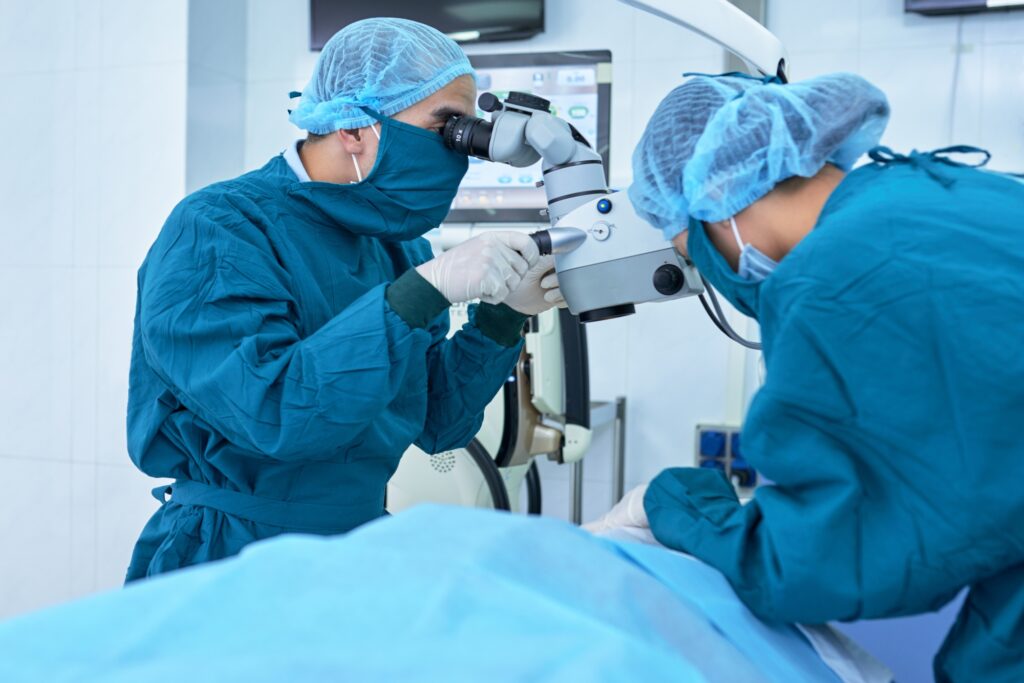The practice of medicine is a thinker’s art, the practice of surgery is a plumber’s.
Martin H. Fischer,
obviously a medical doctor
This was a picture I grew up with in my Medical School. I saw medical specialists as a group of intellectuals discussing patient’s problems in the doctor’s lounge, and surgeons talking in the OR about which sutures and instruments to use. Surgeons were seen more like craftsmen and trade people. There is still a divide between “cognitive” and “technical” specialties. Is there also a division between science and art as far as surgeons are concerned?
Everyone knows the image of a scientist. He is a very logical, detailed, often misunderstood, made fun of, detached, living in a different world, but ever harmless and admired individual who is not very socially gifted. Artists on the other side are disorganized, spur of the moment people, socially very adept, creative, enjoying life very much, but intellectually not demanding. Each image appeals to a different part of the population. Scientists are being valued by older, educated, established people. Artists are being liked by the younger, fun-loving generation, which doesn’t think education is that desirable and important. So where do surgeons fit in the spectrum between these two characterizations?
Surgeons always had an image problem. In the Middle Ages, their job was done by barbers and surgeons were often seen as quacks. Not infrequently they were journeyman, itinerant trade people, who, after a minor procedure was done and payment received, the very next day were in another town seeking new patients. In the second half of the 19th century, the knowledge of surgery exploded, and the discipline had to be recognized as a branch of the medical profession. Surgery as a specialty was still fighting for full acceptance, and the process of building of a scientific base for surgical practice was a crucial element in the proper development.
Surgeons took it very seriously. Experimental laboratories were built everywhere, and soon they were a part of the surgical department in every respectable medical school. Surgical residency was long, typically 7 years, and each resident spent at least one year in a lab. The application of basic sciences in surgery was growing, and enormous effort was being made to develop and explain surgical methods and assess their results.
The second half of the 20th century brought about a surge in technology, improving vastly the surgical treatment of diseases. Frequently there was not enough time to check whether a new method was better than the old one. Intense media marketing resulted in patients demanding that surgeons use the newest procedures and disregard old, already proven ones. Long-term results of some were not known and specifically not proven yet in the hands of a given surgeon. At this point, the concept of randomized trials was developed and was used to compare different ways of treatments against each other. There are obvious limitations imposed by the number of patients and the length of time needed for any medical study to have meaningful results. We are striving to practice evidence-based medicine and this work is needed to come up with guidelines for treatment, a concept which by the way is not generally accepted.
Now for the art of surgery.
There is a huge component of surgeon’s manual dexterity to the overall results of his patients’ treatment. We know surgeons, who complete procedures in a short time, who have no or minimal complications, with little stress to themselves and the operating room crew. We also know doctors, who take forever to do a simple operative procedure, their patients have numerous complications and OR staff is rolling their eyes each time they hear a given surgeon has a case on the operative room schedule. It’s a pleasure to watch surgeon A’s patients recover. Surgeon B always finds explanations for his problems. And that’s not him. He may have all the knowledge of the world, but lacks mental and technical skills to implement them in proper time. And that’s an art.
And here we have it. Is it an art or a science?
It’s both. Surgery is a science. But knowing when and how to apply this knowledge is an art.
And I even didn’t go to doctor – patient and doctor – doctor relationship yet.


